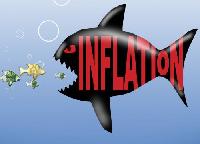
Whenever the RBI plans to make a monetary policy revision, there will be persistent demand from different quarters to reduce the repo rate. Government also expresses it desire for a reduced interest rate. But RBI hardly makes them counted and makes its own independent decision.
It seems that the RBI has different ideas about interest rate policy from business and the government. This divergence of interest is due to the famous conflict of interest in monetary policy between price stability and economic growth.
For the RBI, its monetary policy has three objectives:
- Price stability
- Financial stability
- Provision of adequate credit (to support growth)
But the RBI’s primary responsibility is to ensure price stability. Central banks are born to fight inflation. Growth is a secondary objective and it is more important for the government. The most controversial side of monetary policy is that it is known to reduce inflation by reducing growth. Former Governor Subbaao has once mentioned that sacrificing little bit of growth is necessary to achieve price stability.
Now, in what way achievement of price stability reduces growth? Here we should learn how the ‘Brahmasthra’ of the RBI –repo rate, works in the economy to reduce inflation.
How repo works in the economy to bring down prices?
Whenever inflation goes beyond RBI’s comfort zone –say 6%, RBI will increase the repo rate. In the present inflation targeting framework, repo rate is the only instrument to target inflation.
When repo rate is increased, lending rates by banks goes up. This will reduce amount of loans taken by the households and business people to meet their consumption and investment activities. In this way, consumption and investment comes down. In the next sequence, employment and income of the people also comes down. Because of low income, people reduce demand for commodities and hence, the price of commodities comes down because of weak demand.
In effect, inflation is brought down only after repo rate hike discourages consumption, investment and then reducing income with the people. Then in the next step only, inflation comes down. A major feature of the inflation targeting monetary policy is that it has only one target- inflation and one objective -price stability. What happens to income and welfare of the people doesn’t matter for it in its pursuit for price stability. Deputy Governor of RBI, Deepak Mohanty has made a VAR (Vector Autoregression) study about the working of repo rate in India. According to his study, after an initial increase in repo rate, income reduces after three quarters and inflation reduces two more quarters after the reduction in income.
Central banks generally have the view that for ensuring growth, price stability gives a necessary level playing field. If price level goes high, there can’t be savings, investment and production. Hence, price stability is a precondition for growth and it should be maintained with right vigilance. They recognise the conflict between growth and stability but like to preserve the latter more.
*********









